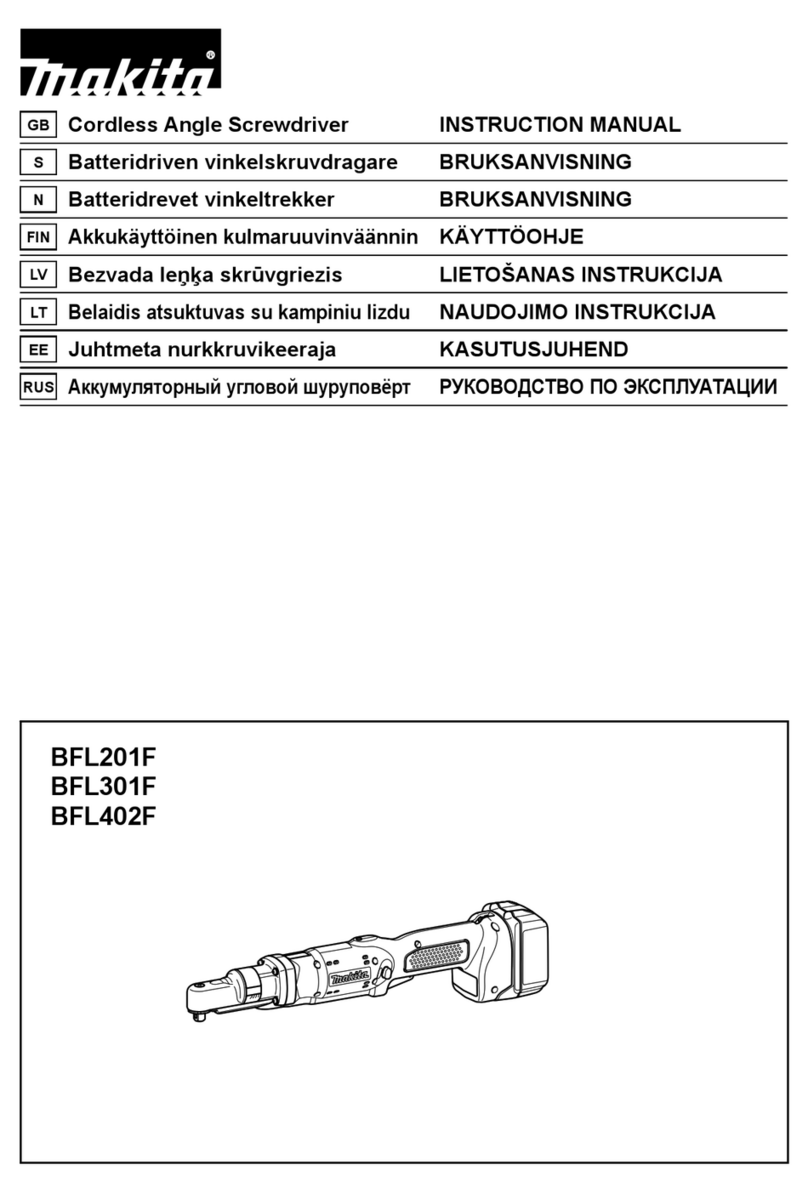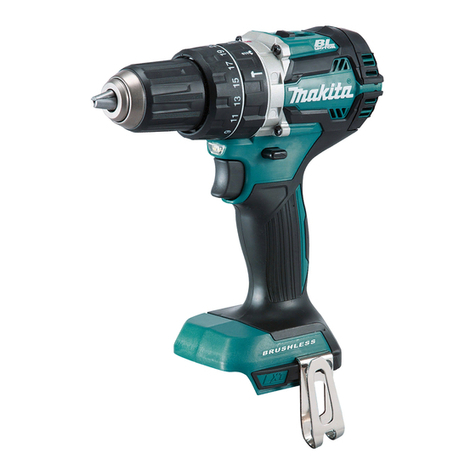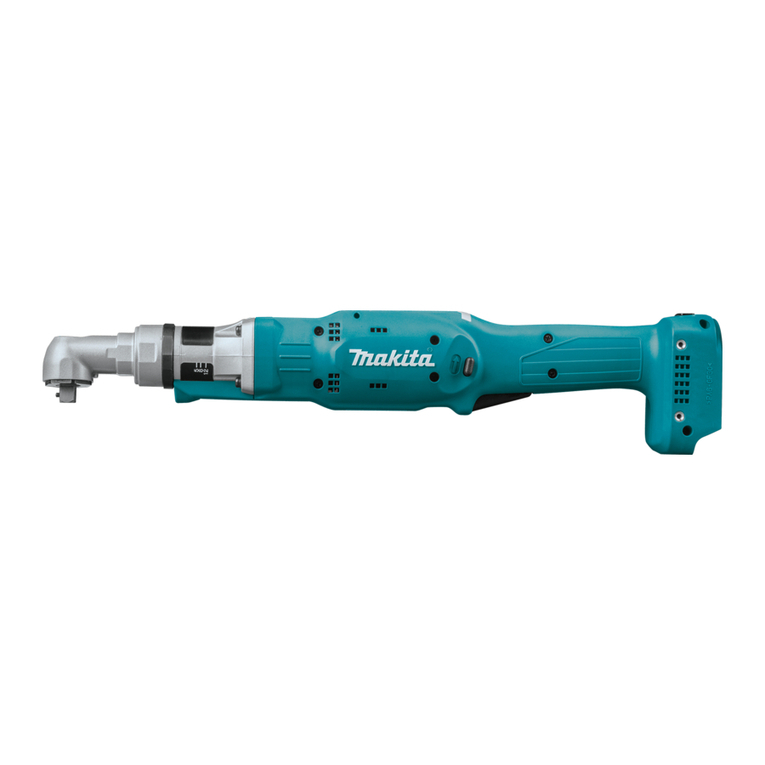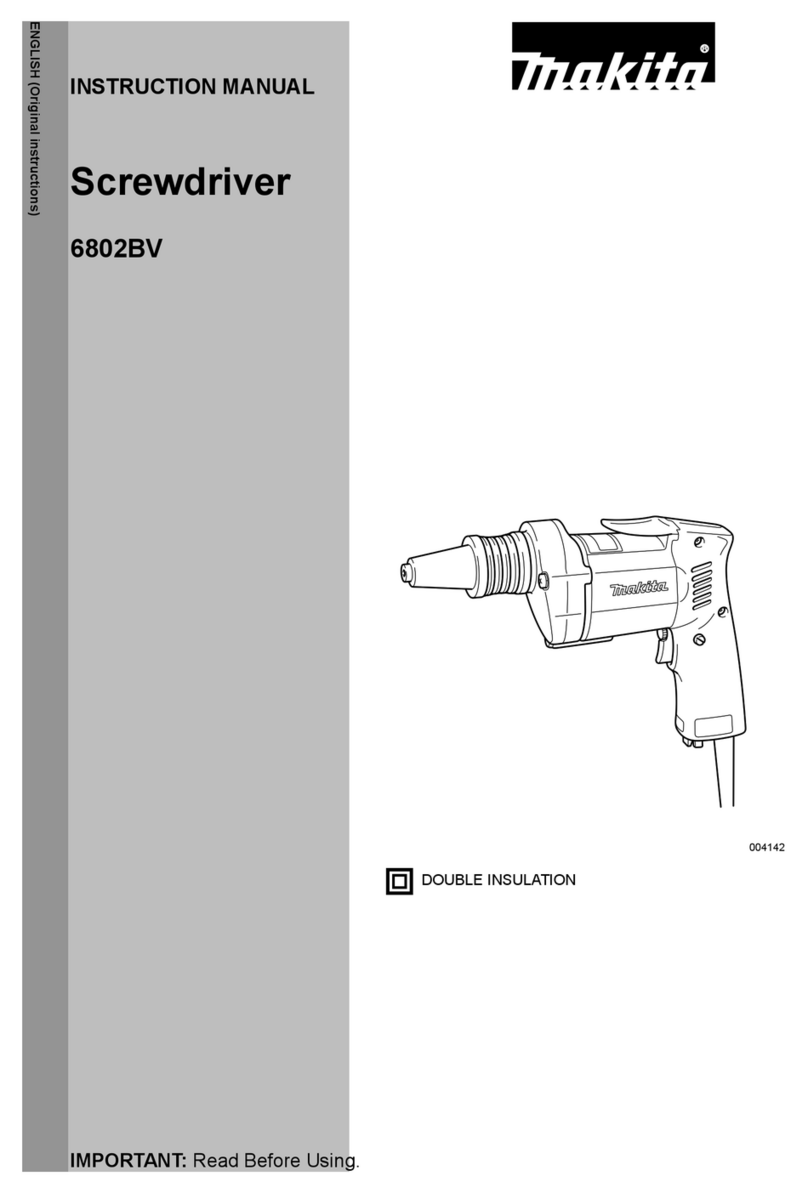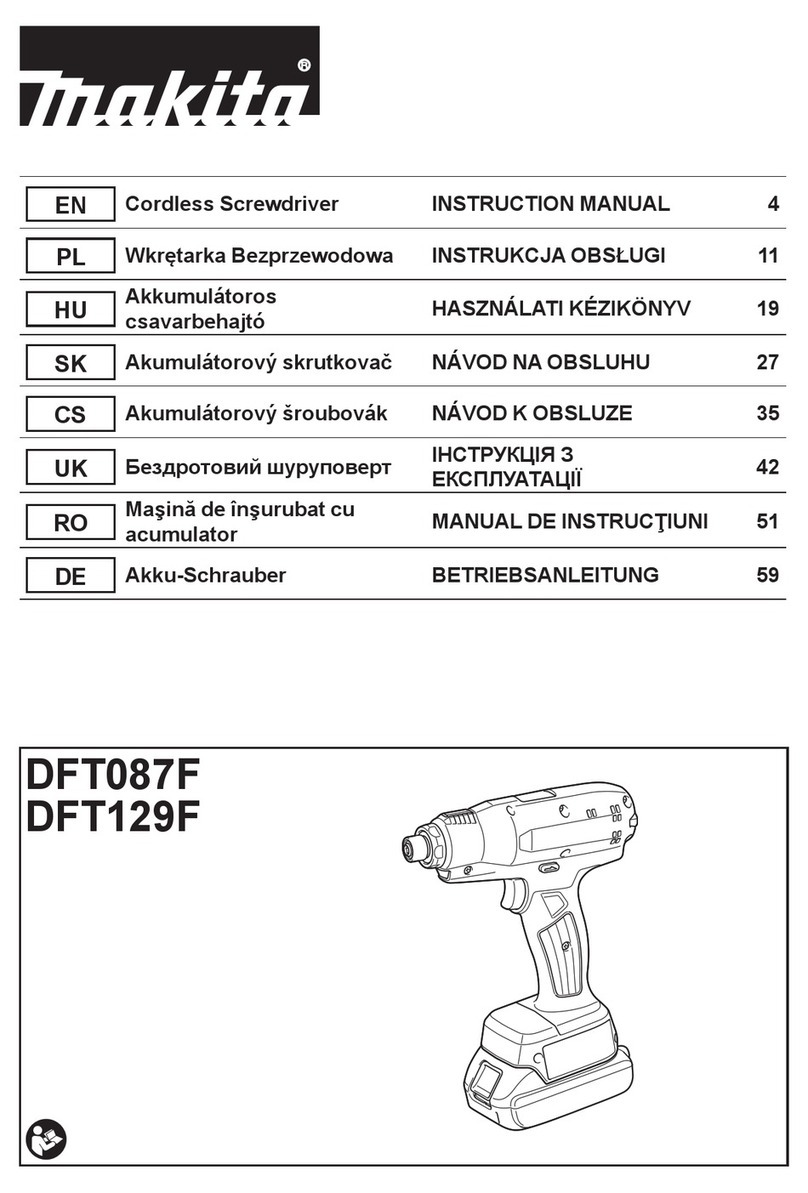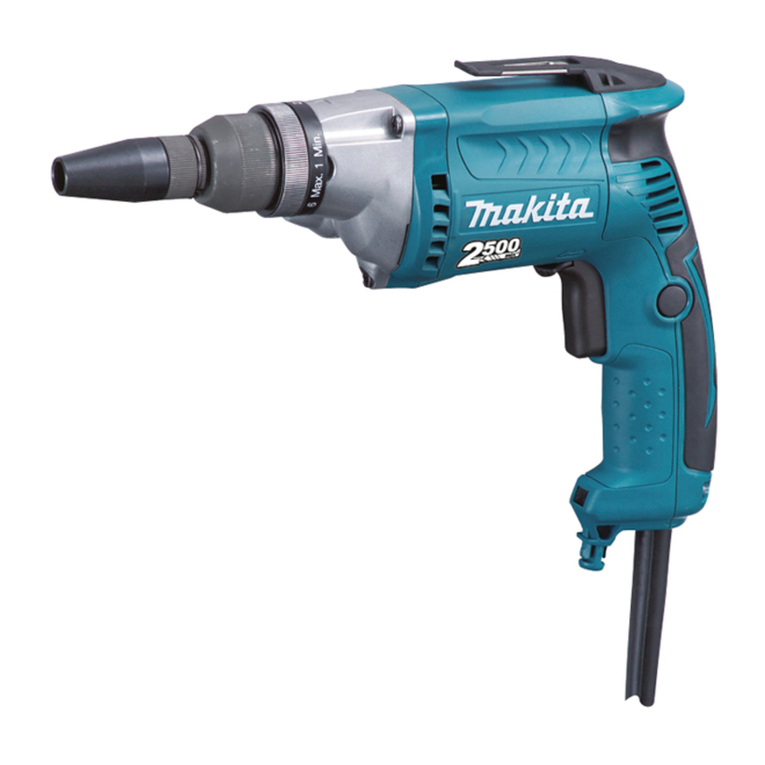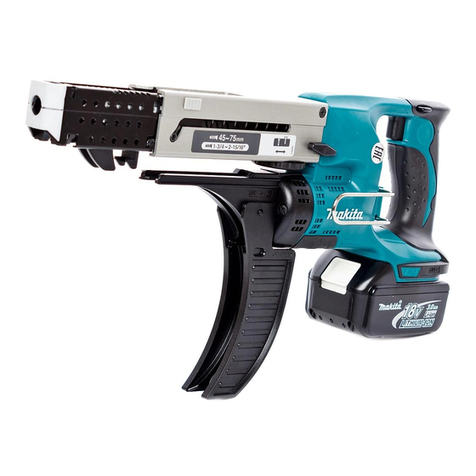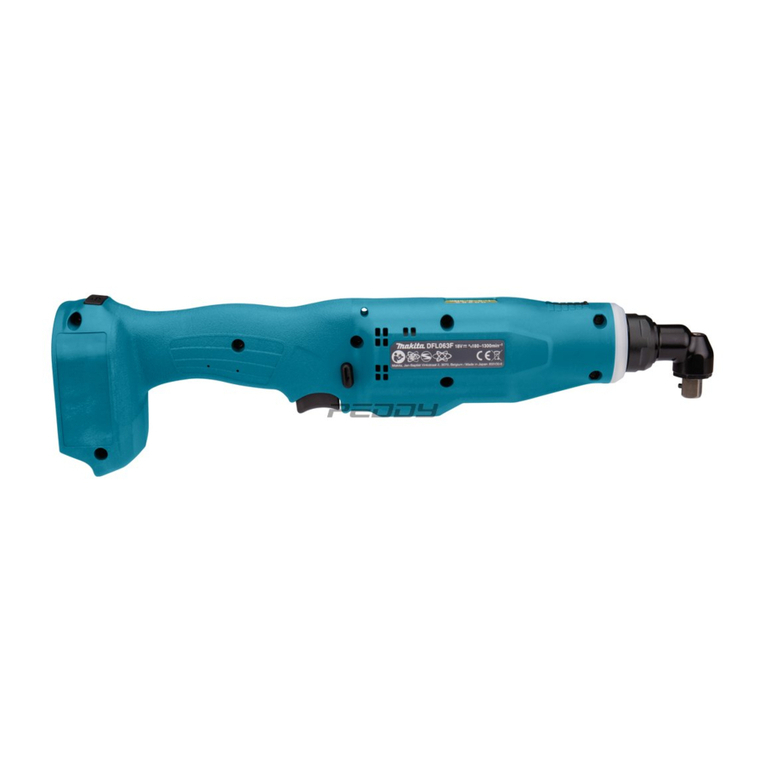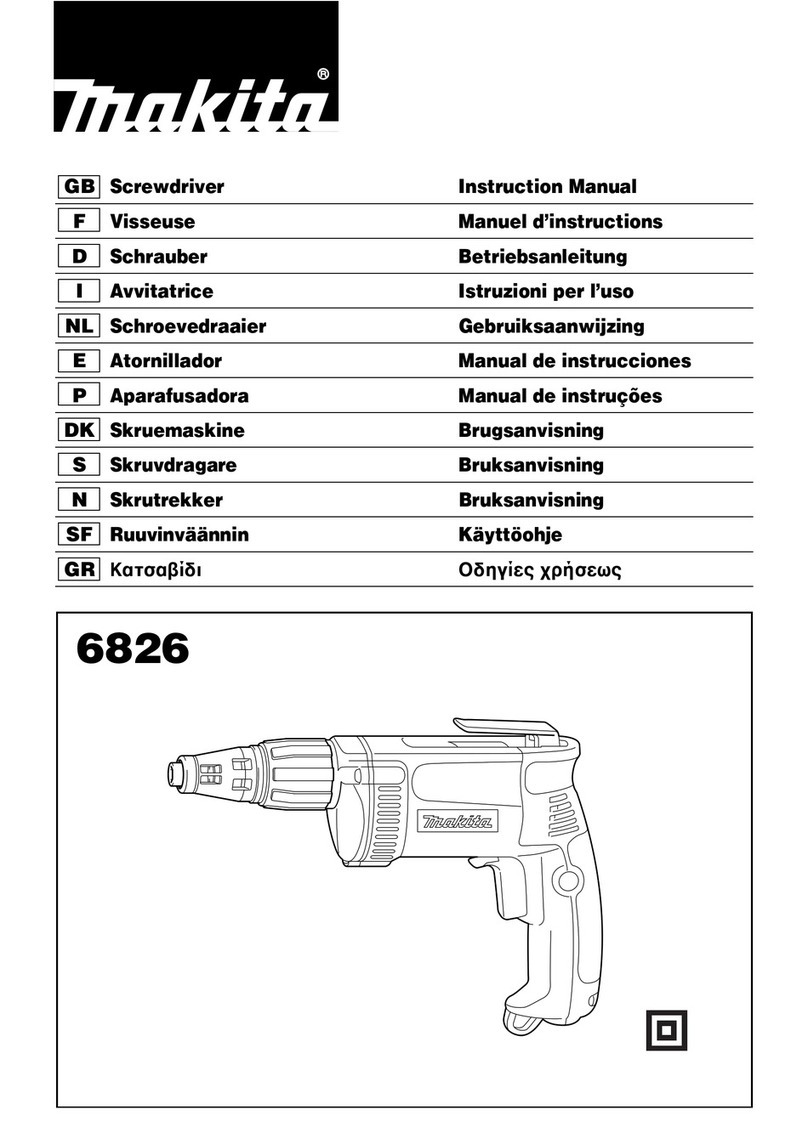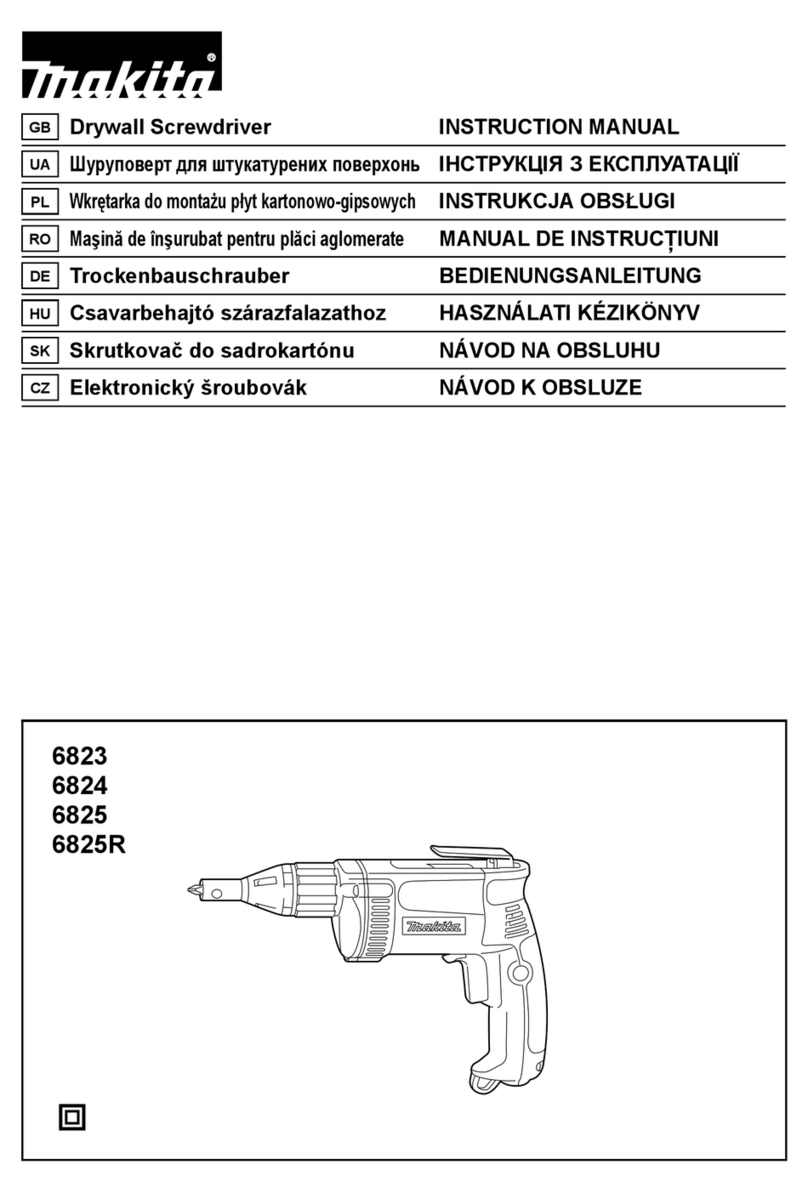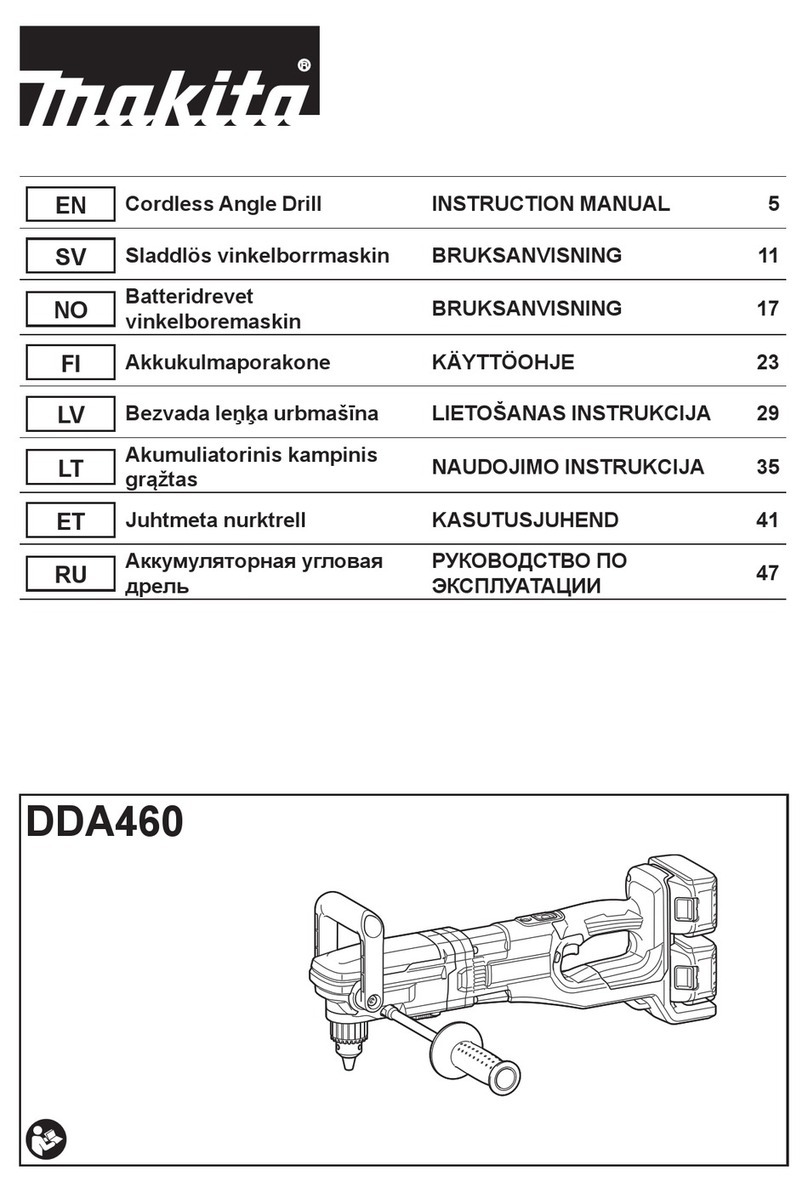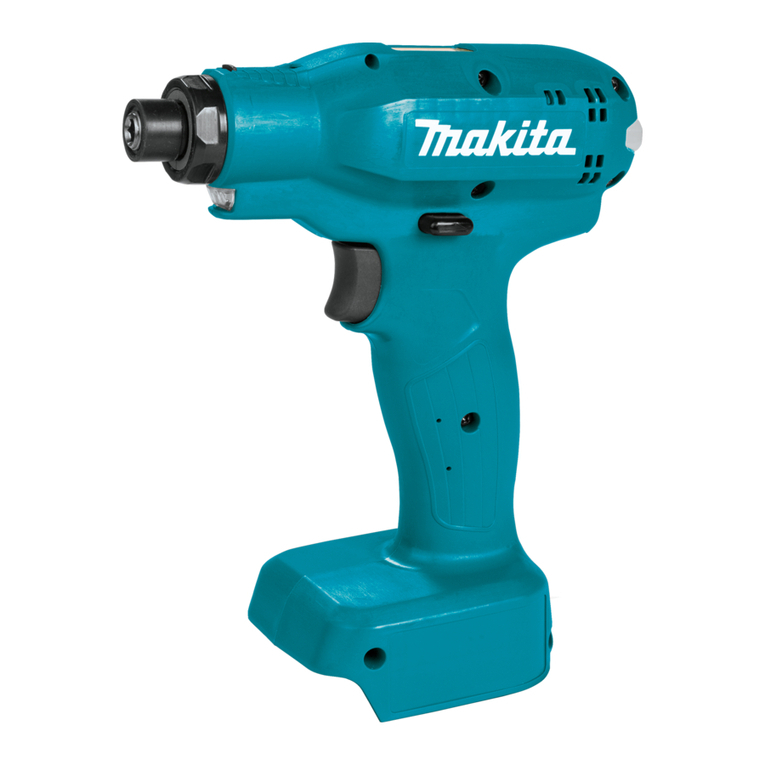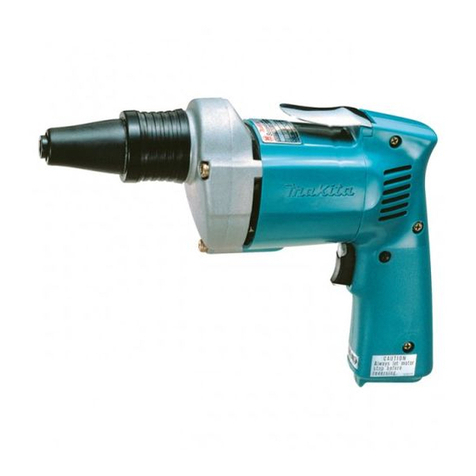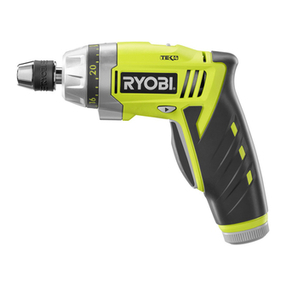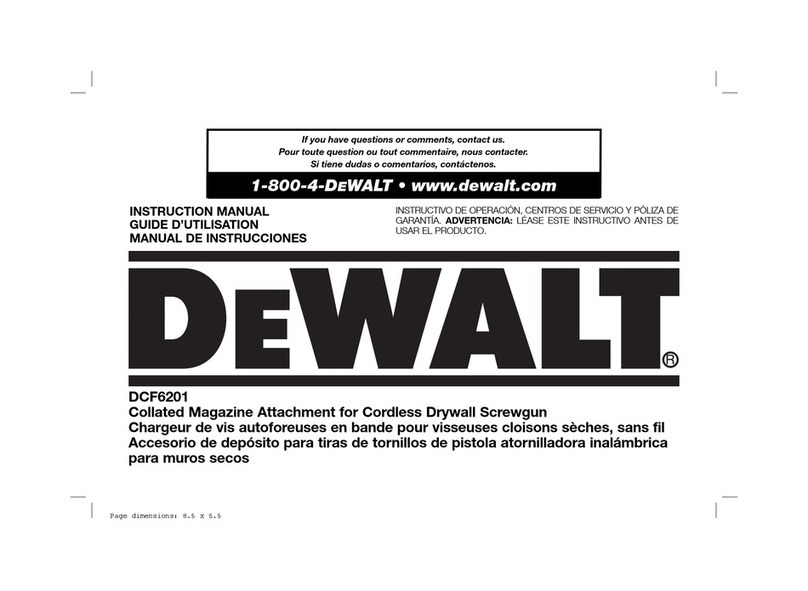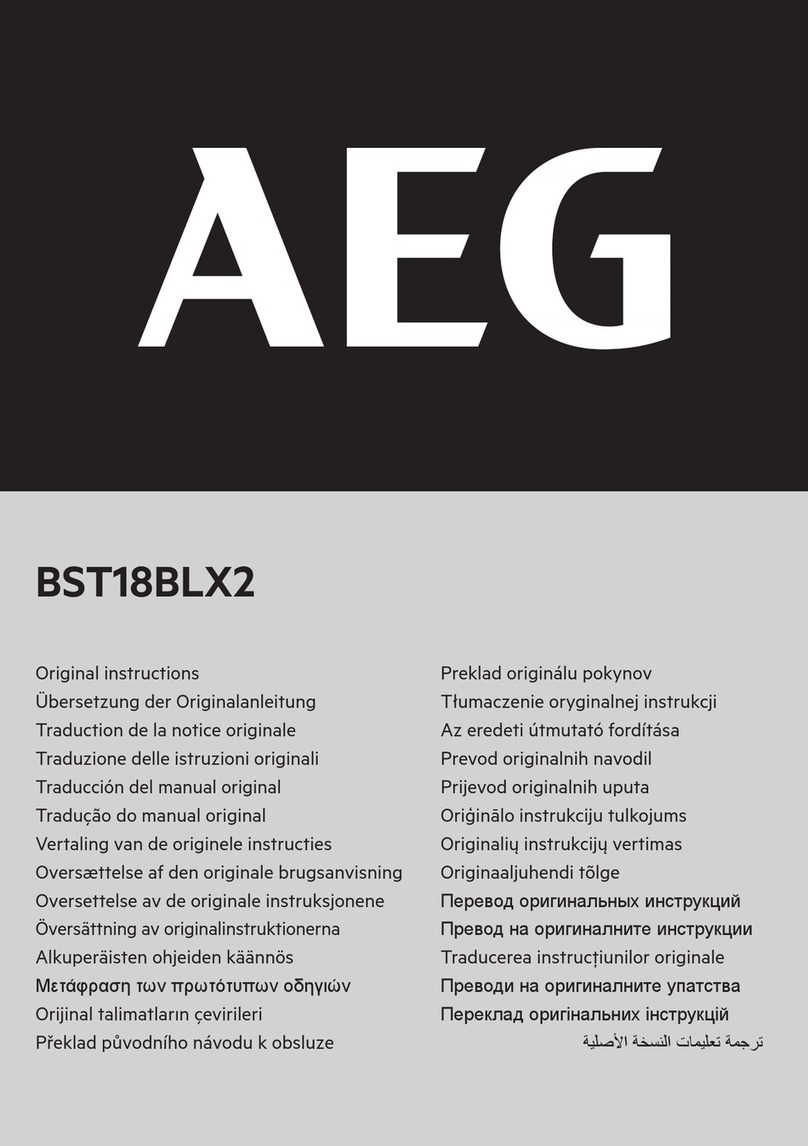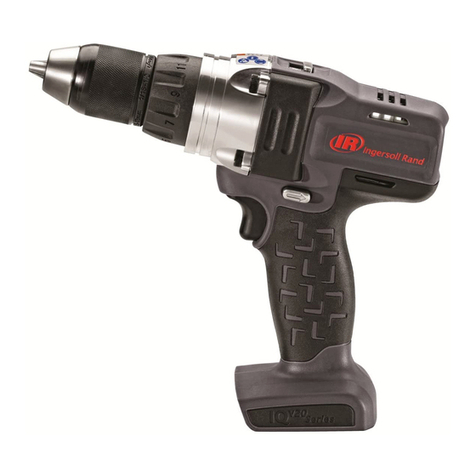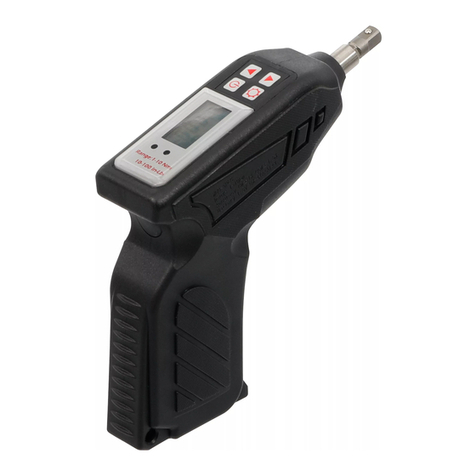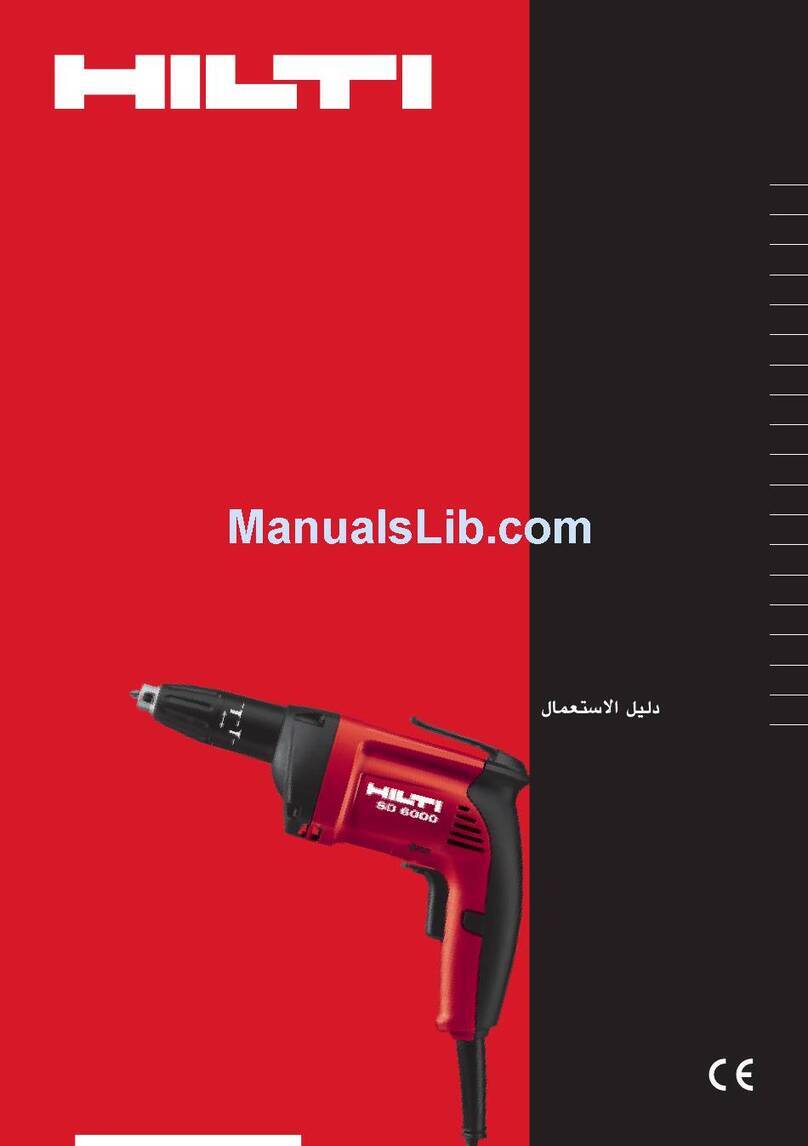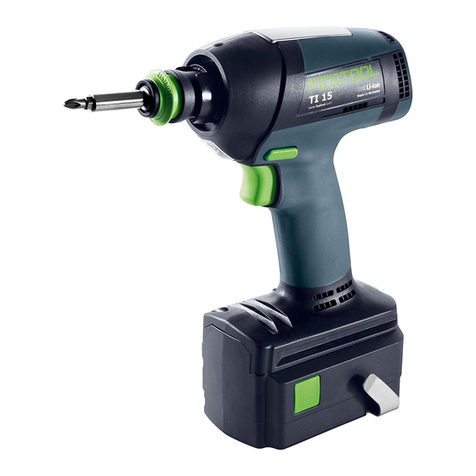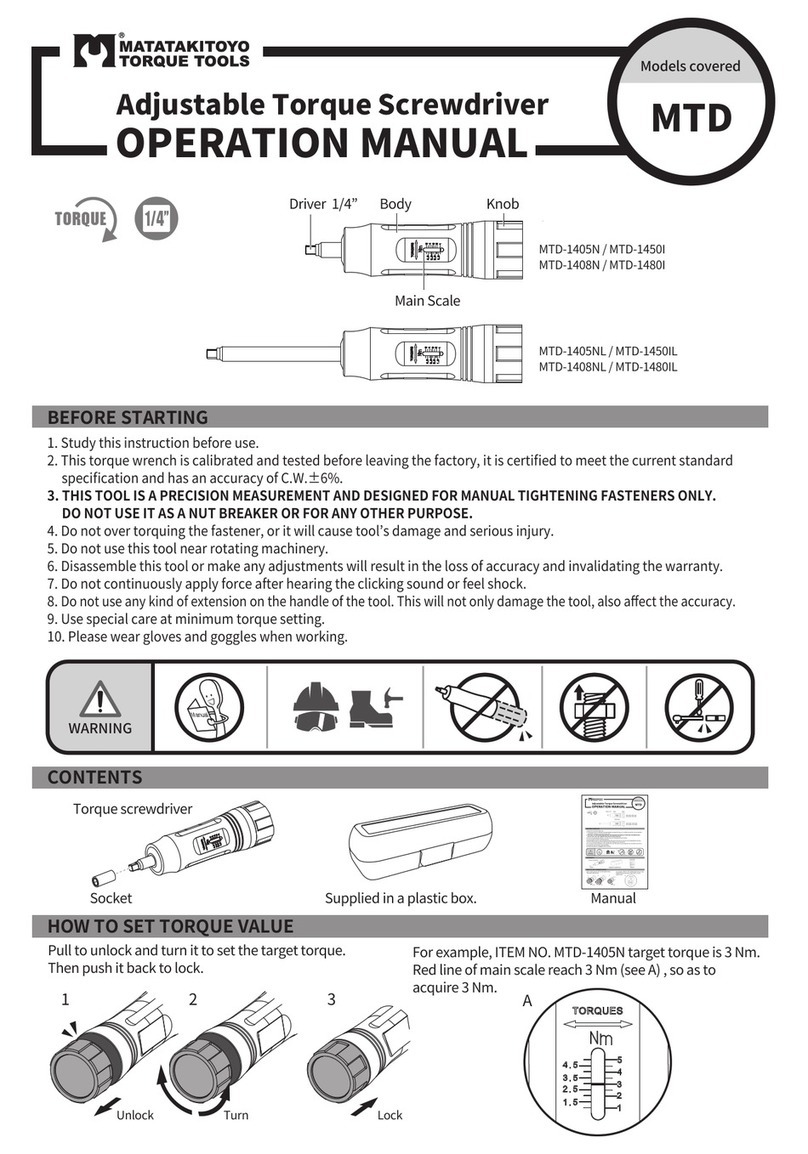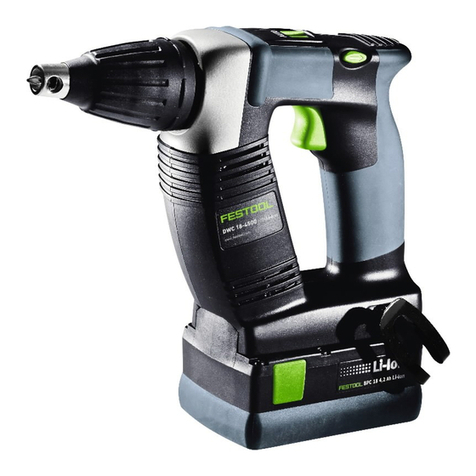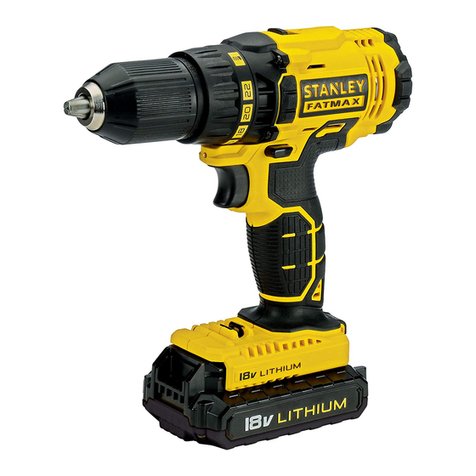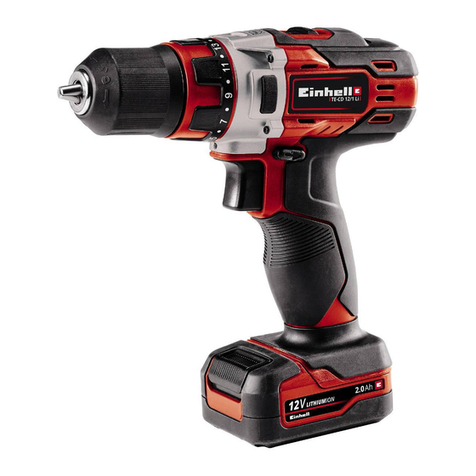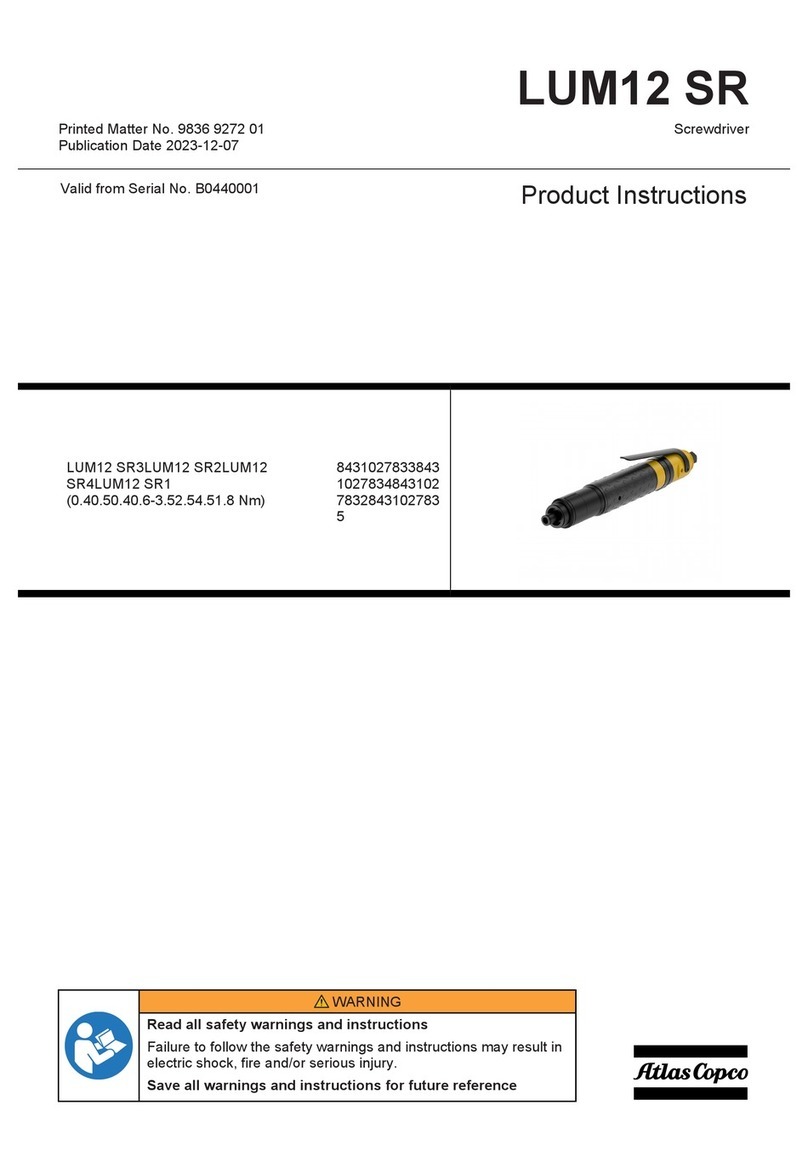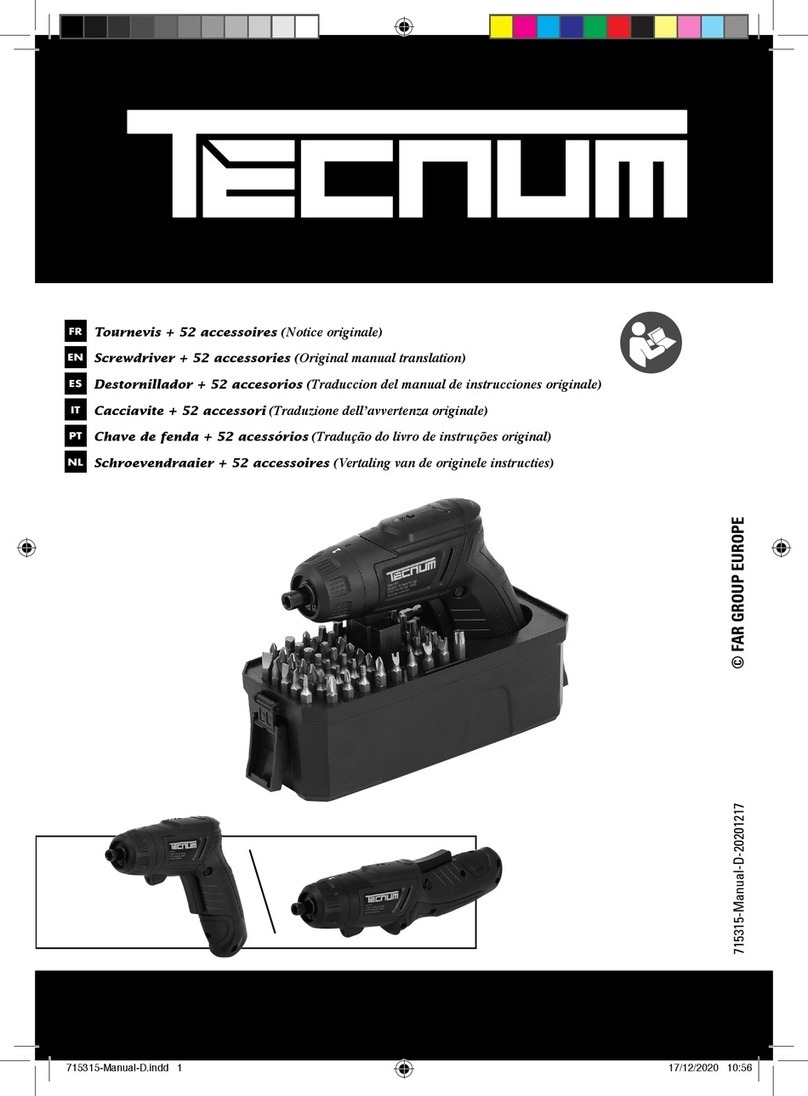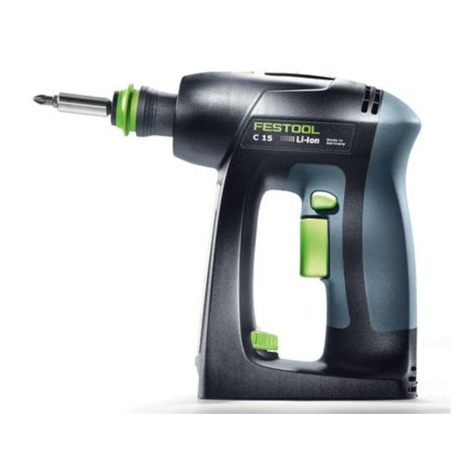
5
4. Charge the Nickel Metal Hydride battery
cartridge when you do not use it for more than
six months.
FUNCTIONAL DESCRIPTION
CAUTION:
• Always be sure that the tool is switched off and the
battery cartridge is removed before adjusting or
checking function on the tool.
Installing or removing battery cartridge
Fig.1
• Always switch off the tool before insertion or
removal of the battery cartridge.
• To remove the battery cartridge, pull out the set
plate on the tool and grasp both sides of the
cartridge while withdrawing it from the tool.
• To insert the battery cartridge, align the tongue on
the battery cartridge with the groove in the housing
and slip it into place. Snap the set plate back into
place. Be sure to close the set plate fully before
using the tool to prevent the battery cartridge from
accidentally falling out of the tool.
• Do not use force when inserting the battery
cartridge. If the cartridge does not slide in easily, it
is not being inserted correctly.
Switch action
Fig.2
CAUTION:
• Before inserting the battery cartridge into the tool,
always check to see that the switch trigger actuates
properly and returns to the "OFF" position when
released.
To start the tool, simply pull the switch trigger. Release
the switch trigger to stop.
Reversing switch action
Fig.3
CAUTION:
• Always check the direction of rotation before
operation.
• Use the reversing switch only after the tool comes
to a complete stop. Changing the direction of
rotation before the tool stops may damage the tool.
This tool has a reversing switch to change the direction of
rotation. Slide the reversing switch to the A side (appear
"F" marking) for clockwise rotation or to the B side
(appear "R" marking) for counterclockwise rotation.
Overload protector
For 6704D
The overload protector automatically cuts out to break
the circuit whenever heavy work is prolonged. Wait 20-30
seconds before resuming operation.
Adjusting the fastening torque
Fig.4
The fastening torque can be adjusted infinitely from
approx. 20 Kg•cm to 80 Kg•cm. To adjust it, loosen the
two screws and turn the adjusting ring. Then tighten the
screws to secure the adjusting ring. Refer to the table
below for relation between the numbers on the adjusting
ring and the fastening torque to be obtained.
1
2
3
4
5
Numberon adjusting ring Fastening torque tobe obtained
20 Kg cm
35 Kg cm
48 Kg cm
60 Kg cm
80 Kg cm
006402
Example
35 Kg• cm of fastening torque can be obtained when the
number 2 is aligned to the red mark.
NOTE:
• Always tighten the two screws to secure the
adjusting ring after adjusting the fastening torque.
• The fastening torque may differ depending upon
the kind of screws, the type of materials to be
fastened, etc. Before starting your job, always
perform a test operation to verify the adequate
fastening torque.
ASSEMBLY
CAUTION:
• Always be sure that the tool is switched off and the
battery cartridge is removed before carrying out
any work on the tool.
Installing or removing socket
For tool with square drive
Use 9.5 mm square drive socket with a hole for detent pin
which is available on the market ( Note: Use 6.35 mm
square drive socket when using the tool with 6.35 mm
drive.)
Fig.5
To install the socket, depress the detent pin on the
square drive with your finger and push the socket onto
the square drive until the detent pin is inserted into the
hole in the socket.
Fig.6
To remove the socket, depress the detent pin with a small
hand tool and pull off the socket.
For tool with round drive
Fig.7
Use a bit with Form C 6.3 shank which is available on the
market. The bit can be inserted directly into the round
drive and held in place.
To install the bit, push it firmly into the round drive. To
remove the bit, grasp it with a pair of pliers and pull it out
